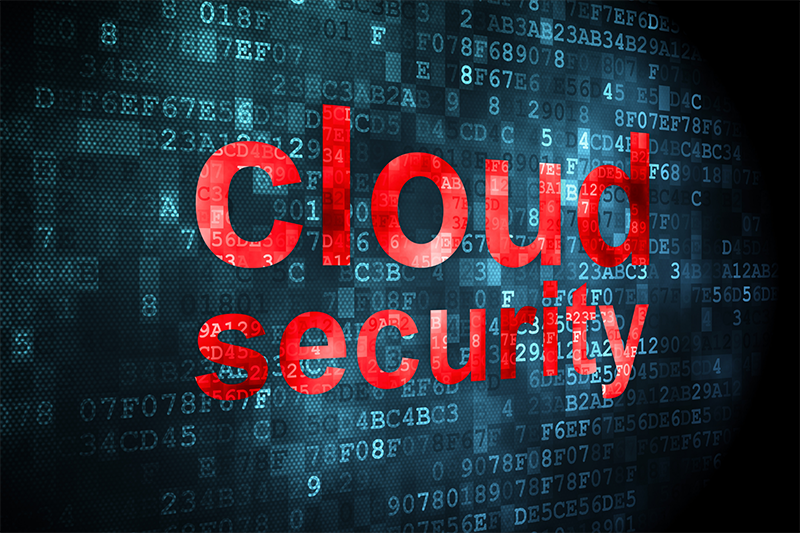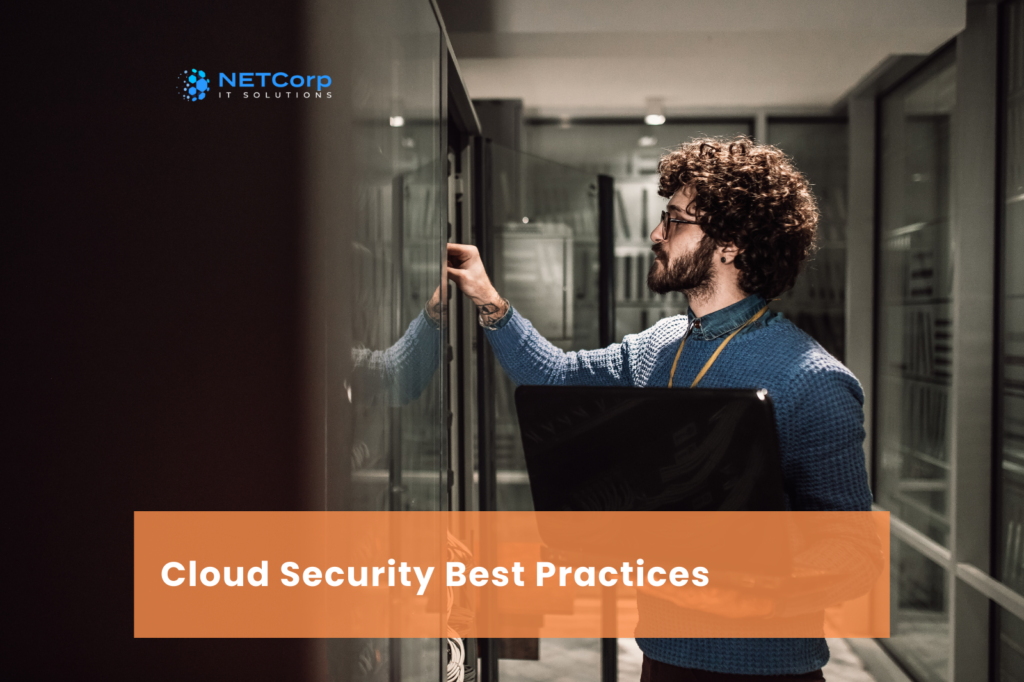What is Cloud Security?
To understand cloud security let’s first understand what cloud computing is. Cloud computing is the operation of hosted services, software, hardware and storage over the internet. All of us are using one or the other type of cloud computing service, knowingly or unknowingly today. Google Drive and Google Photos, for instance, are cloud storage services that most of us are familiar with.
Most businesses and their IT security team were reluctant about migrating to cloud services. The thought of having their data stored on a public cloud felt nightmarish to many. Stepping out of the haven – own local servers – to an open cloud solution needed a lot of deliberation. However, the reluctance was overcome with the strong positives offered by cloud computing services- ease of use, flexibility, configurability and low cost.
With changing times every progressing business felt pressured to take this leap to digital transformation. The rising demand and haphazard migrations posed an array of problems, security being the main. Cloud security, therefore, stems from the need to protect the cloud computing services and the data from attacks.
A Cloud security solution consists of a set of policies, controls, procedures and technologies that work together to protect cloud-based systems, data, and infrastructure. The cloud security management best practice is laid out intricately to prevent unauthorised access and to keep data safe from all emerging threats. From authenticating access to filtering traffic, cloud security can be configured to the exact needs of the business.

Cloud Computing Categories
- Public clou services, include software-as-a-service (SaaS), infrastructure-as-a-sevice (IaaS), and platform-as-a-service (PaaS)
- Private cloud service operate by a public cloud provider
- Private cloud service operated privately (say by internal IT department)
- Hybrid cloud services
Who is responsible for securing the cloud-based services?
Cloud security is a shared responsibility. Yes, this statement may raise eyebrows, but protecting could services lies partly in the hands of the cloud provider and partly in the hands of the customer. Amazon clarified this concept of shared responsibility, where a provider is main responsible to safeguard physical and network infrastructure while the customer is responsible for the direct security.
The different cloud service models – IaaS, PaaS, and SaaS — determine which components — from the physical infrastructure hosting the cloud right down to the data created, processed, and stored in it — will be the responsibility of the service provider or the customer, and therefore who will be responsible for securing them. The service-level-agreement (SLA) that you sign with the provider assures a part of cloud security to be taken care of by the cloud service provider.
Cloud Security Challenges
- Data breaches: Cloud Services are a hotspot for cybercriminals for the data they hold. Due to multiple entry points and a lack of visibility to narrow down compromised resources, data breaches are a common occurrence. Only providers with a strong record of implementing cybersecurity measures are to be trusted.
- Misconfigurations and inadequate change control: A McAfee survey states that 99% of Iaas misconfigurations go unnoticed. This does not stem from a single cause, there are several contributing factors leading to misconfigurations of the cloud’s security setting. Shared responsibility, increased awareness, and tools to analyse and prevent data loss need to be in place.
- Lack of cloud security architecture and strategy: Cybersecurity is no small game. You need professionals in multidisciplinary segments to build a strong and resilient security architecture. Most businesses hire a single resource to overlook all aspects of cyber security combined with IT security. This leads to the ineffective implementation of the right framework. Hire a Managed Security Service Provider.
- Insufficient identity, credential, access and key management: Multifactor authentication and limited access need to be in place to limit challenges arising out of improper or poor access controls provided to different users within an organisation.
- Account hijacking: Many people have extremely weak password security, including password reuse and the use of weak passwords. When an attacker gets hold of such credentials, they use them to access and control accounts and manipulate network and cloud infrastructure. Employee awareness is key to stopping such attacks.
- Insider threats: Not everybody within an organisation share the same interest and commitment. There can be bad fish in any team. Such inside threats are hard to detect and control. A zero-trust policy should be exercised to prevent such threats.

Why is cloud security important?
The list of challenges mentioned above does not end here. However, the listed challenges do drill down the need for sound cloud security. Data compromise can mean the end of the business itself. With cloud platforms holding your confidential data like secret designs, financial records and customer identity, it is crucial to protect them.
Preventing leaks and data theft is critical for maintaining customer trust and protecting the assets that contribute to your competitive advantage
Cloud security is a shared responsibility, businesses contemplating a cloud security strategy must look toward streamlining the necessary security technologies, from malware protection and intrusion prevention to vulnerability management and endpoint detection and response. A cloud-based security solution like Trend Micro is as effective and as powerful as any native security solution.
Cloud Security Best Practices
1. Choose a reliable Cloud Service Provider
Choosing the right or rather experienced cloud service provider can make or break your business. Always look for providers who enforce stringent security measures and meet all regulatory compliances. Transparency is another aspect when selecting a provider. How open are they about their security and vulnerabilities? Do not compromise or cut corners while selecting a cloud service provider.
2. Transparency is the key to maintaining Shared Responsibility
Team up with a provider who is ready to share and understands the roles you play in this partnership. Cloud security is multi-dimensional, so there are aspects that you as a business owner need to look after and there are aspects that the cloud service provider needs to manage. Make sure every aspect of security is well communicated. Who does what needs to be defined to prevent mishaps and minimise damage in the event of an attack.
3. Train users well
Users are your primary protection system in secure cloud computing. Ignorance can prove lethal. Train your employees on how to and how not to access the cloud platforms. Teaching them to recognise phishing emails and making them aware of the danger of open networks can go a long way in securing your cloud data.
4. Maintain Visibility
Lack of visibility is a major factor in security breaches. Maintaining the visibility of the whole ecosystem can be challenging. However, if you make it a part of your process, a lot of security threats can be minimised. See it to secure it. Get to a granular level to see who is accessing the cloud platform and from where.
5. Follow best password practices
Passwords are the first point of breaches. Weak passwords, same passwords for multiple accounts, poor storage mechanism, educate your team on all these aspects of password management.
You can also enforce multi-factor authentication as an extra layer of cloud security best practices.
Learn more about Trend Micro managed XDR
6. Cloud Security SLAs and Contracts
Service-level-agreement (SLAs) and Contracts should never be overlooked. Read and understand them carefully to ensure what aspects of security are handled by the service provider and which ones are your responsibility. Make sure there are no grey areas that may hinder a legal aid if the need ever arises.
7. Enforce endpoint security
Implement endpoint security and make sure your users access cloud platforms only through secure channels. Tools like antivirus, intrusion detection tools, mobile device security, and firewalls should be in place.
8. Maintain the Highest Encryption Levels
Consider using encryption especially to secure data during transfers between the cloud service platform and your network. Encryption basics help maintain full control over the data.
9. Enforce Zero Trust Policy
Restrict the amount of information shared with each user. Share only role-specific data. Put it practice stringent security and educate each employee to follow it without deviations.
10. Employ an MSSP
Cloud security needs to be a multi-layered system which encompasses monitoring, deployment, identification of threats, analysis, mitigation and recovery. Only a team of professionals can handle cloud security with confidence. Make sure you get in touch with an MSSP before taking the big step.
If you need help finding the right cloud solutions or finding the best security solution





